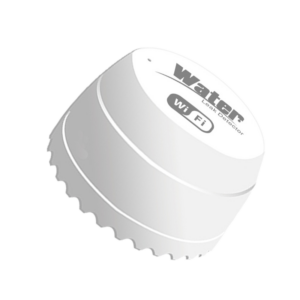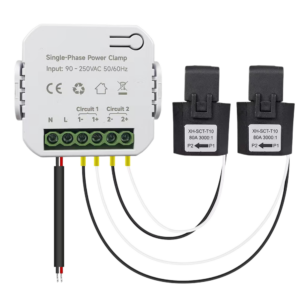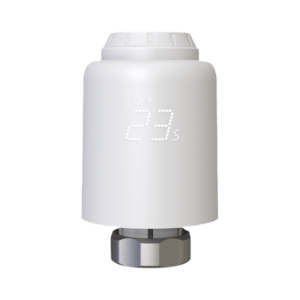Water leaks in American homes are a pervasive issue that, if left unchecked, can lead to significant damage and financial burden. From the gentle drip of a leaky faucet to the catastrophic burst of a water pipe, the sources of water leaks are as varied as their potential impact on a home. Recognizing the importance of early detection and prevention can save homeowners not just thousands of dollars in repairs but also safeguard their health and the structural integrity of their homes. This blog post delves into the common sources of water leaks, their impact, and outlines effective strategies for prevention and early detection, providing homeowners with the knowledge to navigate the challenges of water leak damages.
The Impact of Water Leaks
Structural Damage
Water leaks are silent adversaries to a home's structural integrity. Over time, continuous exposure to water can lead to the rotting of wooden structures and the corrosion of foundations, significantly weakening a home’s structural base. This section will explore the mechanics of how water leaks contribute to structural degradation and the long-term consequences if they remain unaddressed.
Mold and Health Issues
Beyond structural damage, water leaks create the perfect environment for mold growth. Mold not only damages the surfaces it grows on but also poses serious health risks, particularly to those with respiratory issues or weakened immune systems. This part of the post will explain the health risks associated with mold and why preventing leaks is critical to maintaining a healthy living environment.
Financial Costs
The financial implications of water leaks can be staggering, encompassing everything from inflated water bills to extensive repair costs. Unchecked leaks drain resources not only through direct water loss but also through the need for professional repairs and, in severe cases, structural renovations. Here, we'll outline the potential financial fallout of water leaks and emphasize the cost-effectiveness of prevention and early detection.
Common Sources of Water Leaks
Plumbing Issues
Plumbing issues are among the most common sources of water leaks in homes. This section will detail typical plumbing problems that lead to leaks, including worn-out pipe joints, corrosion, and high water pressure, providing homeowners with insights into what to look for during inspections.
Roof and Window Leaks
Compromised roofs and windows are significant culprits in allowing water into the home. We'll highlight how damaged shingles, poor sealing, and aging window frames can lead to leaks, stressing the importance of regular exterior inspections.
Appliance Failures
Household appliances, such as water heaters and dishwashers, can also be sources of leaks. This part will discuss how malfunctioning appliances can lead to unexpected leaks and the signs that indicate an appliance may be failing.
Water Leak Prevention Measures
Preventing water leaks requires a proactive approach, focusing on regular maintenance and the use of modern technologies to detect issues before they escalate. Here are practical steps homeowners can take:
Regular Inspections
Conducting regular inspections of your home's plumbing system, roof, and appliances is essential. Look for signs of wear and tear, such as rust on pipes, missing shingles on the roof, or water stains that may indicate leaks. Seasonal checks, especially before winter and after severe weather conditions, can help catch potential problems early.
Maintenance Tips
- Plumbing: Replace hoses on appliances like washing machines every five years, even if they don't show signs of wear. Use water pressure regulators to prevent high pressure from damaging your pipes.
- Roof and Windows: Ensure that your roof's shingles are in good condition and that there are no gaps or cracks around window frames. Re-caulk and seal as necessary to prevent water ingress.
- Gutters and Downspouts: Clean your gutters regularly and ensure downspouts direct water away from your home's foundation to prevent water damage.
Leak Detection Tools
Invest in leak detection devices that can alert you to the presence of water where it shouldn't be. From simple moisture sensors to smart home systems integrated with your smartphone, these tools can provide an early warning and help prevent major damage.
Early Detection Strategies
Detecting a leak early can be the difference between a simple fix and extensive, costly repairs. Here are strategies to help you stay ahead:
Monitoring Water Usage
Keep a close eye on your water bill. A sudden, unexplained increase in water usage can often indicate a leak. Some modern water meters also offer real-time monitoring, allowing you to detect spikes in water use immediately.
Visual Inspections
Regularly inspect areas prone to leaks, such as under sinks, around appliances, and in the basement. Look for signs of water, such as dampness, discoloration, or mold growth. Pay attention to the exterior of your home as well, especially after heavy rain.
Professional Assessments
Consider hiring a professional plumber to conduct an annual inspection of your home's plumbing system. They can identify potential issues that may not be visible to the untrained eye and provide recommendations for maintenance or repairs.
Mitigating the Damage
If you discover a water leak, quick action is critical to minimizing damage:
Immediate Actions
- Turn off the main water supply to prevent further leakage.
- Remove any water-damaged items and dry the affected area as soon as possible.
- Use fans and dehumidifiers to help dry out wet areas.
Choosing Professional Help
Selecting the right professional is crucial for effective repairs. Look for licensed, insured contractors with good reviews or recommendations. Don't hesitate to ask for references or to see examples of their previous work.
Insurance Coverage
Understand your homeowners insurance policy and what it covers regarding water damage. Document the damage with photos and keep records of any repairs done, as this will be necessary for insurance claims.
Case Studies and Success Stories
Highlighting success stories can illustrate the effectiveness of proactive measures against water leaks. For instance, a homeowner in Florida utilized smart water sensors throughout their home, which alerted them to a small leak behind a wall. Early detection and prompt action prevented the leak from causing significant damage, illustrating the value of integrating technology into home maintenance routines.
Another case involved a homeowner who conducted regular visual inspections and discovered a minor leak in their roof. Quick repairs ensured that the leak did not lead to more severe structural damage, showcasing the importance of vigilance and routine checks.
Navigating the challenge of water leaks in homes requires a combination of knowledge, proactive measures, and the right tools. By understanding common leak sources, implementing preventive strategies, and adopting early detection techniques, homeowners can protect their homes from the detrimental effects of water damage. The key is to be vigilant, regularly maintain your home, and not hesitate to seek professional help when necessary. Embracing these practices can save not only your home's structural integrity but also your health and financial well-being. Let's make water leak management an integral part of our home maintenance routine, ensuring our homes remain safe, dry, and comfortable for years to come.




